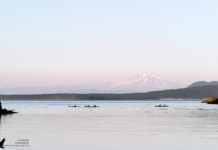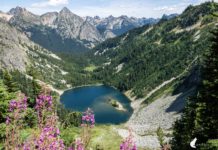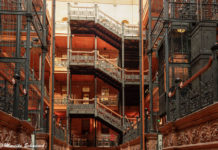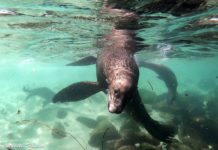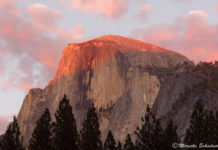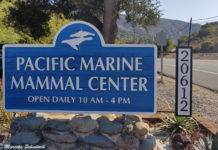USA, California. In the dry and inhospitable Sierra Nevada, the saline soda lake Mono Lake lies at an altitude of almost 2000 metres. With an age of about 760,000 years it is one of the oldest lakes in North America and certainly one of the most beautiful. Because in the course of the time numerous limestone tufa formations, so-called "Tufa", have formed under water. With the lowering of the water level they became visible above the water surface and can now be admired especially at the southwest shore of the lake. Mono Lake with its bizarre, mystical tufa formations is an absolute highlight for every photographer. In my article you can learn more about Mono Lake, what is worth seeing here and what I can give you for your photo trip.
Unassigned, unpaid advertising. The article contains affiliate links.
Table of Contents and Quick Navigation
Origin of the Tufa Structures
Protection for Mono Lake
Fauna and Flora
Places of Interest at Mono Lake
Photo Tips for Mono Lake
Directions South Tufa and Navy Beach
Accommodation
Places of Interest in the Mono Lake Area
Origin of the Tufa Structures
The "petrified springs" of Mono Lake are impressive examples of what nature can produce with a few simple "ingredients".
The Mono Lake does not have a natural drain, but only loses water through evaporation. The minerals infiltrated by the inflowing water therefore accumulate in the lake and the water becomes rich in dissolved carbonates. When Tufa is formed, calcium-rich water from freshwater springs comes into contact with the carbonate-containing water of the lake. Calcium and carbonate react to form calcium carbonate, a solid, sandstone-like material. This accumulates at the sources and towers and all other imaginable forms are formed. The limestone formations, however, were below the water level when they were formed and were therefore hardly visible.

In 1941, Los Angeles extended its production of drinking water to the Mono Lake catchment area. Over a period of 40 years, four of Mono Lake's six tributaries were diverted. For this reason, the water level dropped by about 15 meters, the water volume was halved and the salt content doubled.
Salinity (salt content) in comparison:
Pacific 3.5%
Dead Sea 28%
Mono Lake 7%
As the water level fell, the Tufa formations became visible on the surface of the water. Besides the Tufa formations more and more lake bottom was exposed. Storms blew up the sediment and there were regular dust storms. The entire ecosystem and human health were affected.
Protection for Mono Lake
The sinking of the water level had serious ecological consequences, which were discussed by nature conservationists from 1978 onwards. As a result of court decisions, the discharge of water from the Mono Lake catchment area was finally limited. The water level has therefore been rising slowly since the mid-1990s.
Since 1982, the dry lake bed has been designated as a Mono Lake Tufa State Reserve of the State of California. The bottom of the valley, the lower slopes and large parts of the Mono crater field have been listed as Mono Basin National Forest Scenic Area since 1984.

Fauna and Flora
Mark Twain called Mono Lake the Dead Sea of California. But the lake is by no means dead and not as salty as the Dead Sea. A few species have adapted to the living conditions. And these species produce a high number of individuals.
The food chain in Mono Lake is relatively simple: algae form the food basis for salt flies and brine shrimps. These are the food for millions of birds. Fish do not occur in Mono Lake due to the high salt content. Dead algae and animals are decomposed into minerals by bacteria in the water. These in turn form the basis for algae growth. Brine shrimps are also fished commercially for consumption.
Over 290 bird species have been identified in the Mono area. The most common are: Black-necked grebe, Californian gull, Red-necked chicken, Little plover, Wilson's water tread, American avocet and the wedge-tailed plover.
Mono Lake is one of the most important resting places for migratory birds and home to numerous breeding birds. The visitor centre offers bird-watching tours between mid-May and early September.

During the summer months the salt flies can become annoying. They form dense clouds or carpets in the shore area. The tuff towers provide the dolls with an ideal substrate for underwater attachment. When we were at Mono Lake at the beginning of October, the time of the salt flies was fortunately already over.
Only a few plants were able to adapt to this salty and alkaline environment, such as salt grass and saltwort, the desert wormwood or the yellow-flowering rabbit brush. On the way to the lake shore you can see various plants whose composition changes with increasing proximity to the lake.

Places of Interest at Mono Lake
If you have little time at Mono Lake, a stop at the South Tufa area is the most rewarding. The South Tufa Trail takes you a mile through bizarre Tufa formations. Several information boards provide interesting facts about the formation as well as the fauna and flora of the lake. Toilets and picnic tables are available at the visitor car park.

Right next to the South Tufa area is the Navy Beach. It got its name after the Navy tested explosives here in 1962. There are also Tufa formations here, but they are smaller than in neighbouring South Tufa. The beach is a good place for bathing. When swimming in the lake, however, you should absolutely avoid that salt water gets into your eyes or mouth.
Also close to the South Tufa area is a series of volcanic craters, the so-called Mono Craters. The Panum crater is with about 600 years the youngest of them. It is close to Highway 120 on the way to the South Tufa area. The junction is signposted.
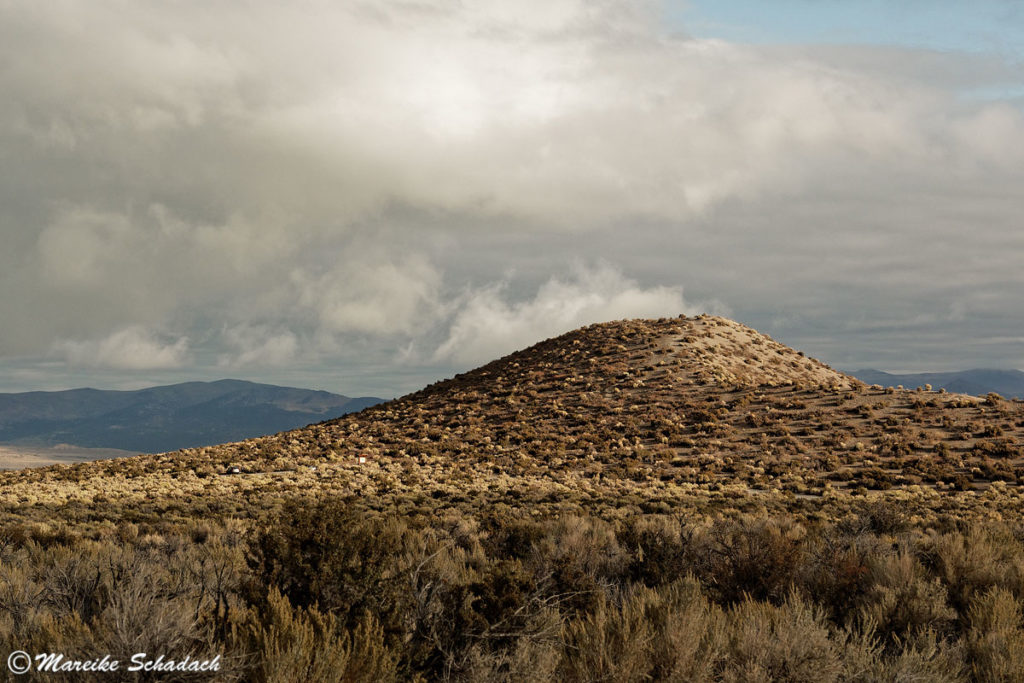
In the Visitor Center you can learn more about the natural and cultural history of the Mono Basin. You can also find out about the environmental problems caused by the discharge of water for drinking purposes. From the parking lot of the center you also have a beautiful view of the lake.
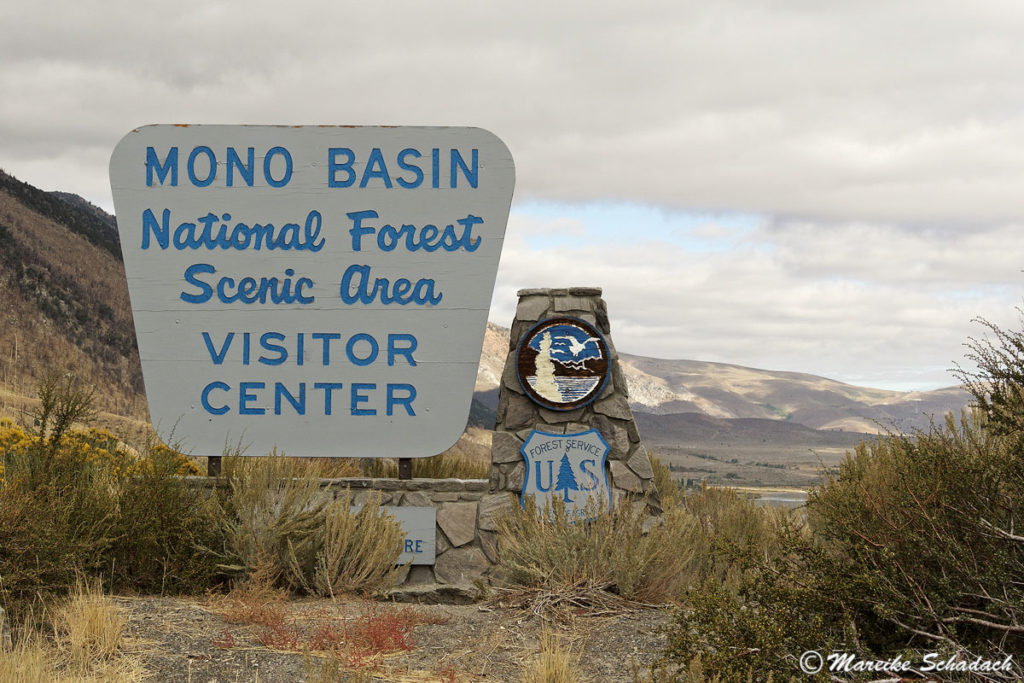
Another beautiful panorama you have from the Mono Lake Viewpoint. From here you can see the lake, the craters, the White Mountains in the east and the Sierra Nevada in the west. You will reach the Lee Vining vantage point after 12 miles on Highway 395 northbound.
If you want to experience the lake and the Tufa formations from a different perspective, then a guided Kayak Tours .
Photo Tips for Mono Lake
Even though Mono Lake with its Tufa formations has been photographed millions of times, it is still easy to find your own unique perspective.
The most beautiful limestone formations can be found on the southwestern shore, at the so-called South Tufa and Navy Beach. From here the mountains of the Sierra Nevada in the distance offer a dramatic backdrop.
My most important photo tip for Mono Lake: The best light for photographing the Tufa formations is shortly before and after sunrise. First the rising sun throws its rays on the mountains of the Sierra Nevada and lights them up red. Then the sun reaches the first limestone formations. The brightly lit Tufa towers then form a great contrast to the mountains, which rise dark in the background.


Since there is only little daylight at this time, you should definitely take a tripod with you. With this you can keep the ISO value low (ISO 100) and reduce the image noise. However, the time shortly before sunrise is also the coldest time of the day. At the beginning of October it was -6° Celsius. A pair of gloves, warm clothes and sturdy shoes are part of the basic equipment.
Tip: try different white balance settings.
Due to lack of time we could not take any night shots at Mono Lake. The starry sky here is fantastic and the Tufa formations are accessible at any time of day or night.
You are very lucky if you catch a windless day. Because then the Tufa and clouds reflect particularly beautifully in the water.
You also have beautiful views of Mono Lake from the Visitor Center or a bit further north from Mono Lake Viewpoint on Highway 395.


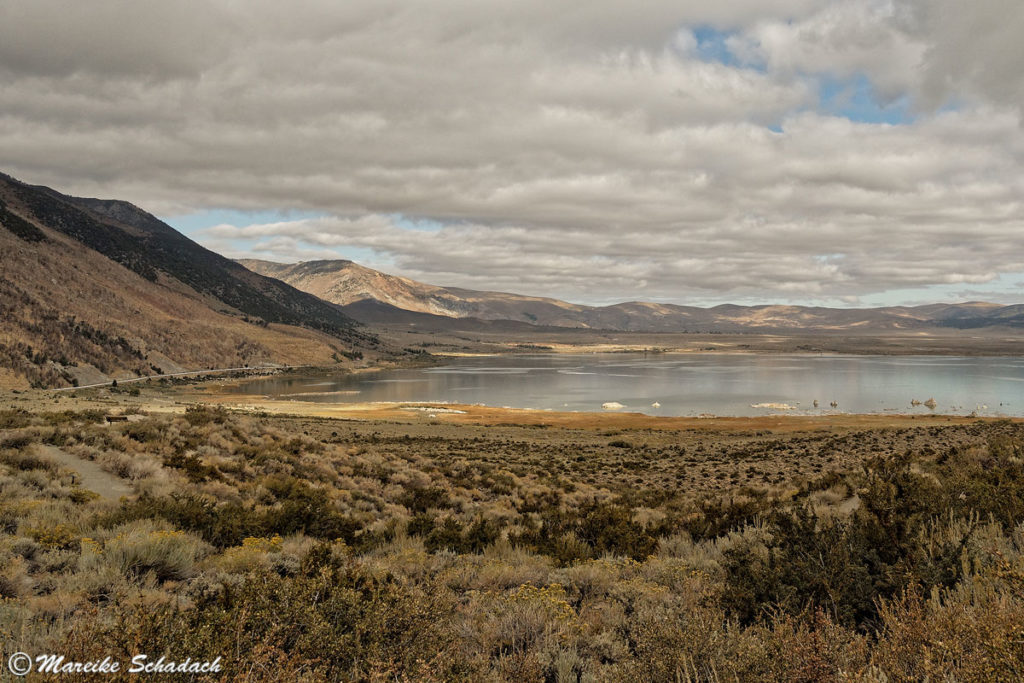
Directions South Tufa and Navy Beach
Coming from Lee Vining, take Highway 395 south. Shortly after passing the southern shore of the lake, Highway 120 branches off to the east. From here the way to the South Tufa parking lot is signposted. After 4.9 miles turn left towards the lake. Now there are two possibilities. The left way leads to the visitor parking South Tufa. The right way leads to Navy Beach.
The lake is accessible all year round via Highway 395. However, the Tioga Road in Yosemite National Park is closed in winter and spring.
Accommodation
To photograph the lake at sunrise or even the starry sky over the lake at night, you need accommodation. There are several motels and guesthouses in Lee Vining as well as a camping site. From Lee Vining you can reach the parking lot at South Tufa in about 20 minutes.
Places of Interest in the Mono Lake Area
In the surroundings of the monolake there are many other sights worth seeing. A visit to the monolake, for example, can be easily integrated into a tour through the Yosemite National Park. From Lee Vining, the Tioga Road leads west directly into the Yosemite National Park. It takes about two hours to reach the famous Yosemite Valley. Yosemite Nationalpark. It takes about two hours to reach the famous Yosemite Valley.
Furthermore, the Ghost Town Bodie is an absolute must for all lovers of Lost Places. The former gold digger settlement originated in 1859, but was abandoned in the 1930s. Today, the ensemble is regarded as the best preserved ghost town in the USA. The driving time from Lee Vining is about 45 minutes.
For those who are more interested in recent American history, I can recommend a visit to the Manzanar War Relocation Centers . During the Second World War 1942-1945 one of the ten internment camps for Japanese Americans of the United States was built here. The journey from Lee Vining takes about two hours.
Book Recommendation for California
You want to know where the journey goes? Then I can recommend these books* about California.
You can order these books at Amazon with a click on the pictures. If you buy a product via one of these affiliate links, I get a small commission and you help me to keep filling Fernweh-Motive with interesting articles. The product will not be more expensive for you.
Have you ever been to Mono Lake yourself? How did you like it? Do you have any questions about my article or suggestions? If so, please write me a comment!
Do you want to know when there are new articles on my blog? Then follow me on Facebook, Pinterest or Instagram. I would also be very happy if you share my article with your friends.




